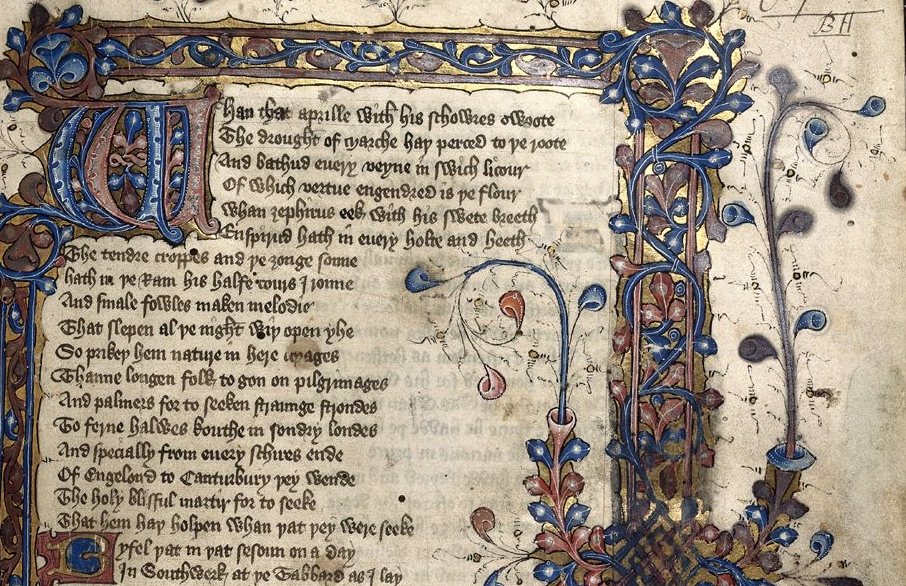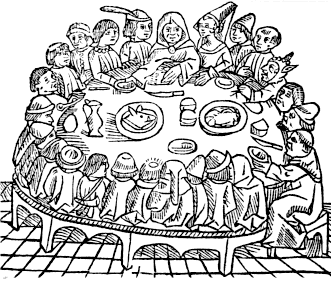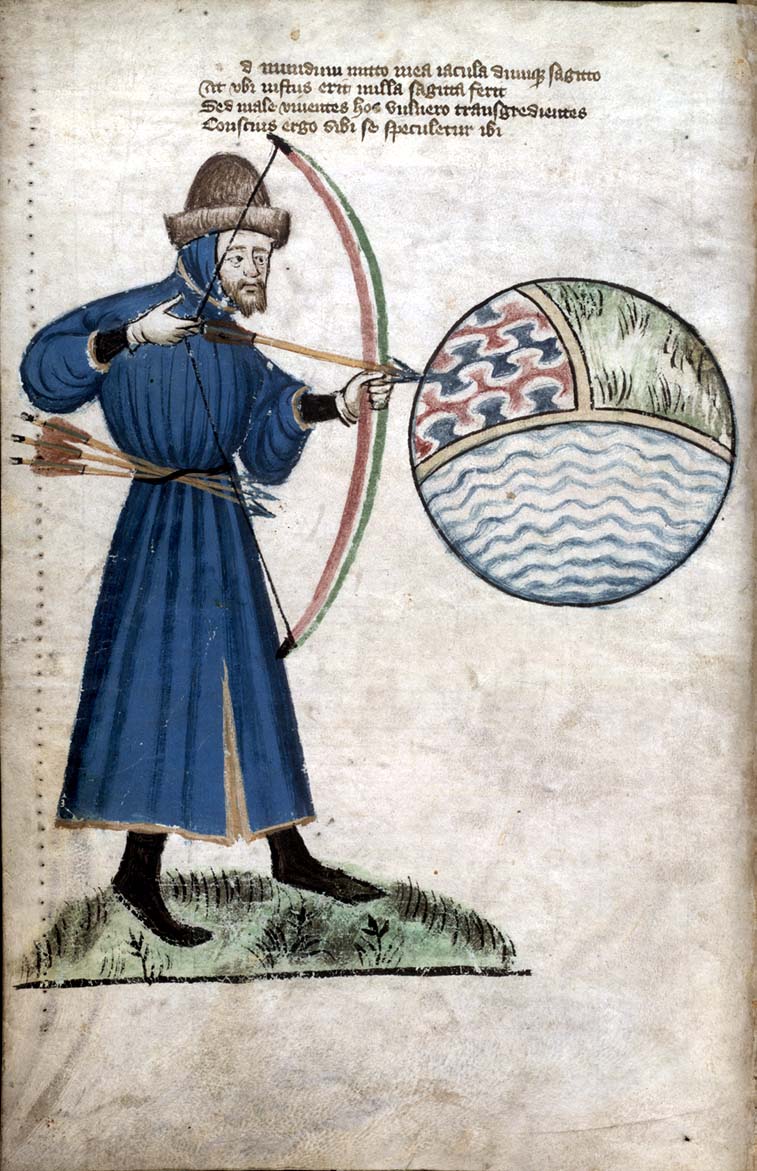|
Harley MS. 7334
Harley MS 7334, sometimes known as the Harley Manuscript, is a mediaeval manuscript of Chaucer's ''Canterbury Tales'' held in the Harleian Collection of the British Library. It was formerly used as a base text for modern editions of the ''Tales'', following the examples of Thomas Wright, who used it as the basis for his 1847 edition, and W. W. Skeat, who felt it gave authoritative variant readings. Description The Harley MS was likely produced in a London workshop within a decade of Chaucer's death, and is therefore one of the earliest extant manuscripts. It has some decoration in red, blue, pink and green, with gold leaf used on borders and initials, and like the Ellesmere Manuscript represents a commission for a wealthy patron (the style of the decoration is very similar to that seen in Ellesmere, perhaps indicating that the same limner worked on both).Thaisen, J. "The Trinity Gower D Scribe's Two ''Canterbury Tales'' Manuscripts Revisited", in Mooney & Connolly, ''Design and di ... [...More Info...] [...Related Items...] OR: [Wikipedia] [Google] [Baidu] |
Geoffrey Chaucer
Geoffrey Chaucer (; – 25 October 1400) was an English poet, author, and civil servant best known for ''The Canterbury Tales''. He has been called the "father of English literature", or, alternatively, the "father of English poetry". He was the first writer to be buried in what has since come to be called Poets' Corner, in Westminster Abbey. Chaucer also gained fame as a philosopher and astronomer, composing the scientific ''A Treatise on the Astrolabe'' for his 10-year-old son Lewis. He maintained a career in the civil service as a bureaucrat, courtier, diplomat, and member of parliament. Among Chaucer's many other works are ''The Book of the Duchess'', ''The House of Fame'', ''The Legend of Good Women'', and ''Troilus and Criseyde''. He is seen as crucial in legitimising the literary use of Middle English when the dominant literary languages in England were still Anglo-Norman French and Latin. Chaucer's contemporary Thomas Hoccleve hailed him as "the firste fyndere of our ... [...More Info...] [...Related Items...] OR: [Wikipedia] [Google] [Baidu] |
Thomas Hoccleve
Thomas Hoccleve or Occleve (1368 or 1369–1426) was an English poet and clerk, who became a key figure in 15th-century Middle English literature. His ''Regement of Princes or De Regimine Principum'' is a homily on virtues and vices, written for Henry V of England shortly before his accession. Biography Hoccleve was born in 1368, as he states when writing in 1421 (''Dialogue, 1.246'') that he has seen "fifty wyntir and three". Nothing is known of his family, but they probably came from the village of Hockliffe in Bedfordshire. In November 1420, Hoccleve's fellow Privy Seal clerk John Bailey returned land and tenements in Hockliffe to him, which suggests that Hoccleve may indeed have had family ties there. What is known of his life comes mainly from his works and from administrative records. He obtained a clerkship in the Office of the Privy Seal at the age of about twenty. This would require him to know both French and Latin. Hoccleve retained the post on and off for about 35 y ... [...More Info...] [...Related Items...] OR: [Wikipedia] [Google] [Baidu] |
Literary Illuminated Manuscripts
Literature is any collection of written work, but it is also used more narrowly for writings specifically considered to be an art form, especially prose fiction, drama, and poetry. In recent centuries, the definition has expanded to include oral literature, much of which has been transcribed. Literature is a method of recording, preserving, and transmitting knowledge and entertainment, and can also have a social, psychological, spiritual, or political role. Literature, as an art form, can also include works in various non-fiction genres, such as biography, diaries, memoir, letters, and the essay. Within its broad definition, literature includes non-fictional books, articles or other printed information on a particular subject.''OED'' Etymologically, the term derives from Latin ''literatura/litteratura'' "learning, a writing, grammar," originally "writing formed with letters," from ''litera/littera'' "letter". In spite of this, the term has also been applied to spoken or sun ... [...More Info...] [...Related Items...] OR: [Wikipedia] [Google] [Baidu] |
Photocopier
A photocopier (also called copier or copy machine, and formerly Xerox machine, the generic trademark) is a machine that makes copies of documents and other visual images onto paper or plastic film quickly and cheaply. Most modern photocopiers use a technology called ''xerography'', a dry process that uses electrostatic charges on a light-sensitive photoreceptor to first attract and then transfer toner particles (a powder) onto paper in the form of an image. The toner is then fused onto the paper using heat, pressure, or a combination of both. Copiers can also use other technologies, such as inkjet, but xerography is standard for office copying. Commercial xerographic office photocopying was introduced by Xerox in 1959, and it gradually replaced copies made by Verifax, Photostat, carbon paper, mimeograph machines, and other duplicating machines. Photocopying is widely used in the business, education, and government sectors. While there have been predictions that photocopiers ... [...More Info...] [...Related Items...] OR: [Wikipedia] [Google] [Baidu] |
Tale Of Gamelyn
''The Tale of Gamelyn'' is a romance written in c. 1350 in a dialect of Middle English, considered part of the Matter of England.Cartlidge, Neil and DS Brewer. ''Boundaries in medieval romance'', 2008, , 9781843841555. pp. 29–42. It is presented in a style of rhymed couplets and described by Skeat as "the older and longer kind of ballad" and by Ramsey as a "rough and ready romance."Knight, Stephen, and Thomas H. Ohlgren. “The Tale of Gamelyn: Introduction.” ''Robin Hood and Other Outlaw Tales'' (1997). Print. This 900-line romance is set during the reign of King Edward I and tells the story of Gamelyn, and the various obstacles he must overcome in order to retrieve his rightful inheritance from his older brother. The tale confronts the corruption of the law, illuminating a lack of moral and political consistency. There is no indication as to where exactly this story takes place, given that the text itself has no place names, and Gamelyn's family name of Boundys most likely ju ... [...More Info...] [...Related Items...] OR: [Wikipedia] [Google] [Baidu] |
Hengwrt Manuscript
The Hengwrt Chaucer manuscript is an early-15th-century manuscript of the ''Canterbury Tales'', held in the National Library of Wales, in Aberystwyth. It is an important source for Chaucer's text, and was possibly written by someone with access to an original authorial holograph, now lost. The ''Hengwrt Chaucer'' is part of a collection called the Peniarth Manuscripts which is included by UNESCO in its UK Memory of the World Register, a list of documentary heritage which holds cultural significance specific to the UK. It is catalogued as MS Peniarth 392D. Following the terminology developed by John M. Manly and Edith Rickert, the manuscript is conventionally referred to as Hg in most editions giving variant readings.See Manly and Rickert, ''The Text of the Canterbury Tales, I: Descriptions of the Manuscripts'', 1940, p.266 History of the manuscript The Hengwrt Chaucer has been in Wales for at least 400 years. This was one of the collection of manuscripts amassed at the mansion of ... [...More Info...] [...Related Items...] OR: [Wikipedia] [Google] [Baidu] |
Worcestershire
Worcestershire ( , ; written abbreviation: Worcs) is a county in the West Midlands of England. The area that is now Worcestershire was absorbed into the unified Kingdom of England in 927, at which time it was constituted as a county (see History of Worcestershire). Over the centuries the county borders have been modified, but it was not until 1844 that substantial changes were made. Worcestershire was abolished as part of local government reforms in 1974, with its northern area becoming part of the West Midlands and the rest part of the county of Hereford and Worcester. In 1998 the county of Hereford and Worcester was abolished and Worcestershire was reconstituted, again without the West Midlands area. Location The county borders Herefordshire to the west, Shropshire to the north-west, Staffordshire only just to the north, West Midlands to the north and north-east, Warwickshire to the east and Gloucestershire to the south. The western border with Herefordshire includes a ... [...More Info...] [...Related Items...] OR: [Wikipedia] [Google] [Baidu] |
Piers Plowman
''Piers Plowman'' (written 1370–86; possibly ) or ''Visio Willelmi de Petro Ploughman'' (''William's Vision of Piers Plowman'') is a Middle English allegorical narrative poem by William Langland. It is written in un-rhymed, alliterative verse divided into sections called (Latin for "step"). Like the Pearl Poet's ''Sir Gawain and the Green Knight'', ''Piers Plowman'' is considered by many critics to be one of the greatest works of English literature of the Middle Ages, even preceding and influencing Geoffrey Chaucer, Chaucer's ''Canterbury Tales''. ''Piers Plowman'' contains the first known reference to a literary tradition of Robin Hood tales. There exist three distinct versions of the poem, which scholars refer to as the A-, B-, and C-texts. The B-text is the most widely edited and translated version; it revises and extends the A-text by over four thousand lines. Summary The poem, a mix of theological allegory and social satire, concerns the narrator/dreamer's quest fo ... [...More Info...] [...Related Items...] OR: [Wikipedia] [Google] [Baidu] |
John Gower
John Gower (; c. 1330 – October 1408) was an English poet, a contemporary of William Langland and the Pearl Poet, and a personal friend of Geoffrey Chaucer Geoffrey Chaucer (; – 25 October 1400) was an English poet, author, and civil servant best known for ''The Canterbury Tales''. He has been called the "father of English literature", or, alternatively, the "father of English poetry". He wa .... He is remembered primarily for three major works, the '' Mirour de l'Omme'', ''Vox Clamantis'', and ''Confessio Amantis'', three long poems written in French, Latin, and English respectively, which are united by common moral and political themes. Life Few details are known of Gower's early life. He was probably born into a family which held properties in Kent and Kentwell Hall, Suffolk.Lee, Sidney (1890). "wikisource:Dictionary of National Biography, 1885-1900/Gower, John, Gower, John". In ''Dictionary of National Biography''. 22. London. pp. 299-304. Stanley and Smith u ... [...More Info...] [...Related Items...] OR: [Wikipedia] [Google] [Baidu] |
Confessio Amantis
''Confessio Amantis'' ("The Lover's Confession") is a 33,000-line Middle English poem by John Gower, which uses the confession made by an ageing lover to the chaplain of Venus as a frame story for a collection of shorter narrative poems. According to its prologue, it was composed at the request of Richard II. It stands with the works of Chaucer, Langland, and the Pearl poet as one of the great works of late 14th-century English literature. The Index of Middle English Verse shows that in the era before the printing press it was one of the most-often copied manuscripts (59 copies) along with ''Canterbury Tales'' (72 copies) and ''Piers Plowman'' (63 copies). In genre it is usually considered a poem of consolation, a medieval form inspired by Boethius' ''Consolation of Philosophy'' and typified by works such as ''Pearl''. Despite this, it is more usually studied alongside other tale collections with similar structures, such as the ''Decameron'' of Boccaccio, and particularly Chau ... [...More Info...] [...Related Items...] OR: [Wikipedia] [Google] [Baidu] |
Adam Pinkhurst
Adam Pinkhurst is best known as a fourteenth-century English scribe whom Linne Mooney identified as the 'personal scribe' of Geoffrey Chaucer, although much recent scholarship has cast doubt on this connection. Biography There are records of an 'Adam Pynkhurst' (as it is usually spelled) from 1355 to 1399–1401. The earliest is a property sale by Pinkhurst, his wife Joanna, and another married couple in Dorking and Betchworth, Surrey; this suggests that he was probably born sometime in the mid-1330s at the latest. In 1370 Pynkhurst was granted a handsome annuity by King Edward III; this record and subsequent ones identify him as a 'King's Archer', that is, a member of an elite group charged with protecting the king. The 1381 Poll Tax records for Bramley, Surrey, record amounts paid some three times what an average person would have been expected to contribute. Records of 1385 pertaining to the purchase and then sale (back to the previous owner) of a property adjoining the church ... [...More Info...] [...Related Items...] OR: [Wikipedia] [Google] [Baidu] |
Canterbury Tales
''The Canterbury Tales'' ( enm, Tales of Caunterbury) is a collection of twenty-four stories that runs to over 17,000 lines written in Middle English by Geoffrey Chaucer between 1387 and 1400. It is widely regarded as Chaucer's ''magnum opus''. The tales (mostly written in verse, although some are in prose) are presented as part of a story-telling contest by a group of pilgrims as they travel together from London to Canterbury to visit the shrine of Saint Thomas Becket at Canterbury Cathedral. The prize for this contest is a free meal at the Tabard Inn at Southwark on their return. It has been suggested that the greatest contribution of ''The Canterbury Tales'' to English literature was the popularisation of the English vernacular in mainstream literature, as opposed to French, Italian or Latin. English had, however, been used as a literary language centuries before Chaucer's time, and several of Chaucer's contemporaries—John Gower, William Langland, the Pearl Poet, and J ... [...More Info...] [...Related Items...] OR: [Wikipedia] [Google] [Baidu] |






.jpg)

_plate15.jpg)
